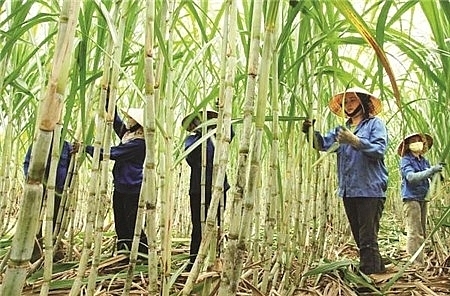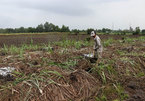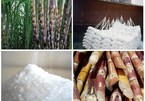 |
| The Vietnamese sugar industry holds nearly 40,000 tonnes of excess sugar |
At Son La Sugar JSC, the overstocked sugar volume is nearly 40,000 tonnes with a value equivalent to VND500 billion ($21.74 million). Tuy Hoa Sugar JSC so far still has about 15,000 tonnes, equivalent to more than VND170 billion ($7.39 million).
This was brought about by the low price of sugar and weakening demand, leading to high inventories. With these difficulties, the area of sugarcane plantation has been significantly reduced, causing a reduction in Vietnam's sugarcane production.
After the 23.47 US cent a pound peak in early October 2016, the price of sugar has fallen due to an oversupply. From the beginning of 2019, the price has increased by 5.7 per cent, showing signs of recovery. However, domestic enterprises have yet to see the light at the end of the tunnel as they are also facing another challenge.
Specifically, the country's sugar consumption demand for 2019 is forecasted to reach about 1.5-1.6 million tonnes a year, while production is only 1.2 million tonnes. This overdemand has caused an upsurge in smuggling activities.
In particular, from August onwards, the upstream provinces of the Mekong River, such as An Giang and Dong Thap in the rainy season offer good conditions for sugar smuggling.
According to estimates by the Vietnam Sugarcane and Sugar Association (VSSA), about 500,000 tonnes of sugar are smuggled into Vietnam every year, seriously affecting the domestic sugar industry and prices. Prices in the northern and the south-central provinces are affected the most as these areas produce less sugar and are closer to the entry points of smuggled sugar than the South.
As a result, 17 out of 36 factories producing sugar are running losses and losing equity.
According to research by Prof Dr Vo Tong Xuan, the production cost of sugarcane in Vietnam is too high ($50 a tonne), which makes it difficult to compete with other sugar-producing countries, such as Thailand ($30 a tonne), Brazil ($16 a tonne), and Australia ($18 a tonne).
In 2017, the number of sugar factories across the country has decreased from 46 to 42, and according to the latest update in 2019, the number is down to 36. There are many factories that only operate perfunctorily, so it is difficult to predict exactly how many factories will remain in the 2019-2020 farming season.
According to a representative from the VSSA, over the past two years, many sugar factories faced financial difficulties. As the ASEAN Trade in Goods Agreement (ATIGA) has yet to come into force in Vietnam, many sugar factories have yet to announce the purchase price for sugarcane to farmers because they want to wait out the policy from the authorities. This discourages sugarcane growers from production.
This situation will not only seriously affect the 2018-2019 sugarcane crop, it will also affect the one after, while from January 1, 2020 the ATIGA will take effect.
According to the Mercantile Exchange of Vietnam (MXV), the price of sugar in October 2019 on ICE New York is forecasted to plunge 3.32 per cent to VND5.827 million ($253.35) a tonne.
There are two main reasons for this decline. The first is that the Brazilian Real slipped to a 2.5-month low against the USD. Brazil is the largest sugar producer in the world, and a depreciating currency encourages Brazilian farmers to sell, thereby increasing sugar supply.
In addition, the pressure coming from the plunging oil prices last week – taking oil to the lowest this month and dragging down ethanol prices – is driving Brazilian sugarcane factories to increase the production of sugar instead of ethanol. VIR
Tan Duong

Sugar industry experiencing tough days
Comprehensive measures are needed to save the sugar industry.

Mekong Delta sugarcane farmers switch en masse to other crops
The area under sugarcane in the Cuu Long (Mekong) Delta has shrunk dramatically during the 2019-20 crop after many farmers switched to other crops following losses in recent years.

Sugar industry: some die, others thrive
The sugar industry is experiencing stormy days as prices have dropped dramatically. However, some companies are thriving and plan to ‘swallow’ their rivals.
 Currently, the country still has about 650,000 tonnes of sugar on inventory, the industry's highest so far, resulting in 17 out of 36 sugar production factories losing money.
Currently, the country still has about 650,000 tonnes of sugar on inventory, the industry's highest so far, resulting in 17 out of 36 sugar production factories losing money.